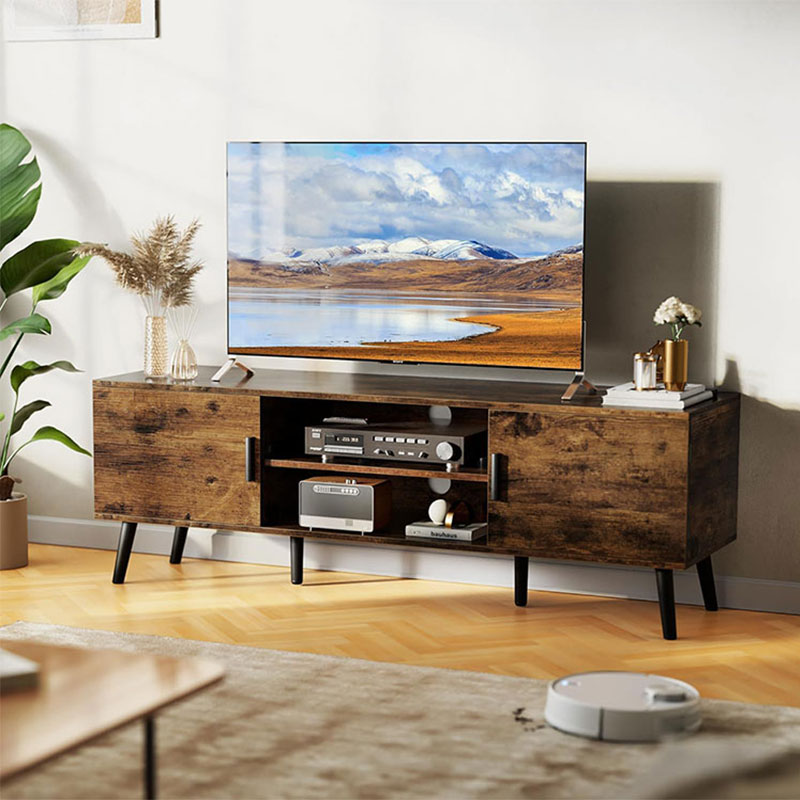How Big Should The TV Stand Be
Choosing the right TV Stand is critical to achieving a balanced, functional, and aesthetically pleasing entertainment setup. The size of the tv stand directly impacts stability, storage efficiency, and overall room harmony. This guide provides clear, practical advice to help you select the ideal dimensions for your TV stand.
1. Match the TV Stand Width to Your TV Size
The width of the TV stand should be proportionate to the television it supports. As a general rule, the stand should be wider than the TV base to prevent tipping and ensure visual stability. For TVs up to 55 inches, a stand between 50-60 inches wide is typically suiTable. For larger screens (65-85 inches), consider stands wider than 60 inches. This creates a balanced appearance and provides ample surface area for additional devices.
2. Consider Viewing Height and Ergonomics
The height of the TV stand affects your viewing experience. The center of the screen should align with your eye level when seated. Standard TV stands range from 20-30 inches in height. Low-profile stands (20-24 inches) are ideal for larger TVs or when wall-mounting is not an option. Mid-height stands (25-30 inches) work well in most living environments. Avoid stands that place the TV too high, as this can cause neck strain.
3. Depth Matters for Equipment and Cable Management
Depth is often overlooked but essential for accommodating media components and managing cables. A depth of 16-20 inches is standard for most entertainment systems. This allows sufficient space for AV receivers, gaming consoles, and cable organizers without protruding awkwardly. Ensure there is adequate ventilation behind the stand to prevent electronic overheating.
4. Account for Storage Needs
Evaluate your storage requirements before selecting a stand. Open shelving provides easy access to frequently used devices, while closed cabinets conceal clutter. If you have multiple components (e.g., soundbars, streaming devices, game consoles), choose a stand with integrated shelves or compartments. The interior height of shelves should accommodate taller items like amplifiers or center-channel speakers.
5. Room Dimensions and Layout
The size of the room plays a key role in determining the appropriate TV stand dimensions. In smaller spaces, opt for compact stands with a minimal footprint to avoid overcrowding. For larger rooms, a wider stand can anchor the space and provide additional storage. Always measure the available wall space and ensure there is enough clearance for other furniture, such as sofas or cabinets.
6. Material and Load Capacity
The construction material directly influences the stand’s durability and weight capacity. Solid wood, engineered wood, and metal frames offer robust support for heavy TVs and equipment. Verify the manufacturer’s specified weight limit to ensure the stand can safely hold your TV and accessories.
Conclusion
Selecting the right TV stand involves careful consideration of width, height, depth, storage, and room layout. By prioritizing proportionality, functionality, and safety, you can create an organized and visually cohesive entertainment area. Always refer to product specifications and room measurements before making a final decision.


